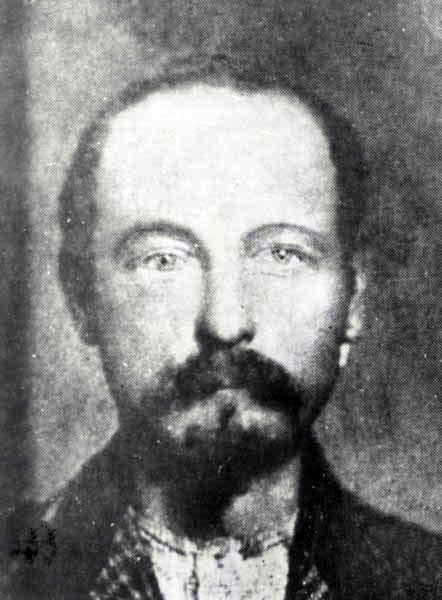
Cole Younger
Thomas Coleman “Cole” Younger was an outlaw who joined forces with Jesse and Frank James to rob banks and trains in the period following the Civil War. He was born into a large and affluent family on January 15, 1844, near Lee’s Summit, Missouri. Though his father was a respected landowner and merchant, Cole Younger became an outlaw in the early years of the Civil War. He had trouble with a militiaman, went into hiding, and armed himself with a weapon, a violation of an order by General John C. Frémont who was commander of Union forces in Missouri. After his father was killed, his sister assaulted, and his mother’s house burned down, Younger joined other Confederate guerrilla s to fight the Union forces.
Younger fought with William Clarke Quantrill in the raid on Lawrence, Kansas, in 1863. He participated in many fierce raids until the end of the Civil War. Afterwards, Younger and his brothers, Jim and Bob, joined fellow bushwhackers Jesse and Frank James in robbing banks, stagecoaches, and trains. They were, to some extent, seeking revenge for the poor treatment Southern sympathizers suffered at the hands of Unionists during and after the war. Many former Confederates supported the James-Younger gang during these years.
Cole Younger’s career as an outlaw came to an end in Northfield, Minnesota. He was captured after attempting to rob the Northfield bank in 1876. Though Jesse and Frank James escaped, Cole, along with his brothers, was captured and sent to Stillwater Prison. Bob Younger died in prison in 1889; Cole and Jim Younger remained there until they were paroled on July 10, 1902.
After his release, Cole Younger worked briefly with Frank James in a Wild West show. Later, Younger wrote a memoir and toured as a lecturer. He died in Lee’s Summit on March 21, 1916, and is buried there.
Text by Carlynn Trout with research assistance by Elizabeth E. Engel
References and Resources
Society Resources
The following is a selected list of books, articles, and manuscripts about Cole Younger in the research centers of The State Historical Society of Missouri. The Society’s call numbers follow the citations in brackets.
Articles from the Newspaper Collection
- “Younger on the Road Again: Has Started Out This Time with a Street Show – Has Not Been Successful.” Jefferson City Tribune. March 20, 1908. p. 1, c. 6. [Reel # 17266]
- “A Letter from the Notorious Cole Younger: He Denies the Charges and Challenges Investigation.” Jefferson City People’s Tribune. December 9, 1874. p. 1, c. 3. [Reel # 16513]
Books
- Christensen, Lawrence O., William E. Foley, Gary R. Kremer, and Kenneth H. Winn, eds. Dictionary of Missouri Biography. Columbia: University of Missouri Press, 1999. pp. 822-823. [REF F508 D561]
- Croy, Homer. Last of the Great Outlaws: The Story of Cole Younger. New York: Duell, Sloan and Pearce, 1956. [REF F508.1 Y89c]
- Koblas, John. The Great Cole Younger and Frank James Historical Wild West Show. St. Cloud, MN: North Star Press of St. Cloud, 2002. [REF F508.1 Y89ko2]
- Younger, Cole. The Story of Cole Younger, by Himself. Chicago: Press of the Henneberry Co., 1903. [REF F508.1 Y89 In Case]
Manuscript Collection
- Younger, Cole (1844-1916), Papers, 1915 (C1670)
Application for Confederate veteran’s pension, data on his Civil War service, correspondence between Missouri and U.S. adjutant’s general about Younger, and newspaper clipping about John McCorkle’s book, Three Years With Quantrill. - Younger, Cole (1844-1916) and James (1848-1902), Papers, 1885-1897 (C0443)
Letters from Cole Younger in the Stillwater, MN, prison to his aunt and W.C. Bronaugh. Letters from Missouri officials, 1897, and a petition signed by members of the 39th General Assembly to the Minnesota Board of Pardons asking for the release of the Youngers.
